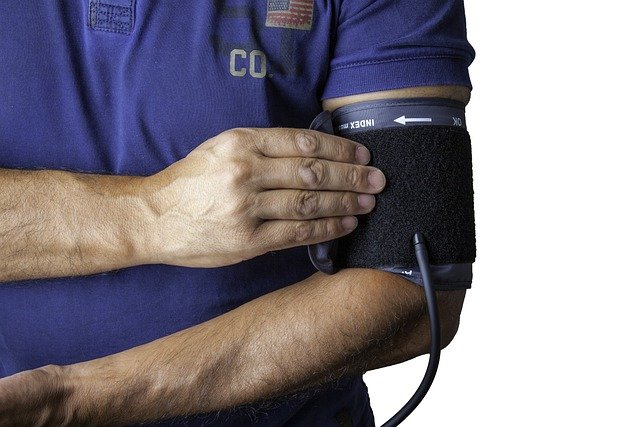Early signs and symptoms of prostate cancer
Prostate cancer is one of the most common cancers affecting men worldwide. Recognizing the early signs and symptoms of this disease is crucial for timely diagnosis and effective treatment. While prostate cancer often develops slowly and may not cause noticeable symptoms in its early stages, being aware of potential warning signs can help men seek medical attention promptly.

What are the most common early symptoms of prostate cancer?
Prostate cancer in its early stages may not present any symptoms at all. However, as the disease progresses, men may experience various urinary symptoms. These can include:
-
Frequent urination, especially at night
-
Difficulty starting or stopping urination
-
Weak or interrupted urine flow
-
Burning sensation or pain during urination
-
Blood in urine or semen
It’s important to note that these symptoms can also be caused by other non-cancerous conditions, such as benign prostatic hyperplasia (BPH) or prostatitis. Nevertheless, if you experience any of these symptoms persistently, it’s crucial to consult a healthcare professional for proper evaluation.
How does prostate cancer affect sexual function?
Prostate cancer and its treatment can have significant impacts on sexual function. Some early signs related to sexual health include:
-
Difficulty achieving or maintaining an erection
-
Painful ejaculation
-
Decreased libido
-
Blood in the semen
These symptoms may not necessarily indicate prostate cancer, as they can be caused by various factors, including age-related changes or other health conditions. However, if you notice any of these symptoms, it’s essential to discuss them with your doctor to determine the underlying cause and appropriate course of action.
Are there any physical signs of early prostate cancer?
In the early stages, prostate cancer rarely causes physical signs that can be detected without medical tests. However, as the disease advances, some men may experience:
-
Pain or discomfort in the pelvic area
-
Bone pain, particularly in the lower back, hips, or thighs
-
Unexplained weight loss
-
Fatigue
It’s important to remember that these symptoms are more commonly associated with advanced stages of prostate cancer. Early-stage prostate cancer is typically detected through routine screening tests, such as prostate-specific antigen (PSA) blood tests and digital rectal exams (DRE), rather than physical symptoms.
How is prostate cancer diagnosed in its early stages?
Early detection of prostate cancer often relies on routine screening methods, as symptoms may not be present. The two primary screening tools used are:
-
Prostate-Specific Antigen (PSA) This blood test measures the level of PSA, a protein produced by the prostate gland. Elevated PSA levels may indicate prostate cancer, although other conditions can also cause PSA levels to rise.
-
Digital Rectal Exam (DRE): During this physical examination, a doctor inserts a gloved, lubricated finger into the rectum to feel the prostate gland for any abnormalities in size, shape, or texture.
If these screening tests suggest the possibility of prostate cancer, further diagnostic procedures may be recommended, such as:
-
Prostate biopsy
-
Imaging tests (MRI, CT scan, or bone scan)
-
Genomic testing
What are the risk factors for developing prostate cancer?
While the exact causes of prostate cancer are not fully understood, several risk factors have been identified:
-
Age: The risk of prostate cancer increases significantly after age 50.
-
Race: African American men have a higher risk of developing prostate cancer.
-
Family history: Men with a father or brother who had prostate cancer are at increased risk.
-
Genetic factors: Certain inherited gene mutations may increase the risk of prostate cancer.
-
Diet and lifestyle: A diet high in red meat and fat, and low in fruits and vegetables, may increase risk.
-
Obesity: Being overweight or obese may increase the risk of aggressive prostate cancer.
Understanding these risk factors can help men make informed decisions about prostate cancer screening and adopt healthier lifestyle choices to potentially reduce their risk.
How can men reduce their risk of prostate cancer?
While some risk factors for prostate cancer, such as age and family history, cannot be changed, there are several steps men can take to potentially reduce their risk:
-
Maintain a healthy diet rich in fruits, vegetables, and whole grains
-
Exercise regularly and maintain a healthy weight
-
Limit consumption of red meat and high-fat dairy products
-
Consider including foods rich in antioxidants, such as tomatoes and broccoli, in your diet
-
Discuss the potential benefits and risks of prostate cancer screening with your doctor
-
Avoid smoking and limit alcohol consumption
By adopting these healthy lifestyle habits and staying vigilant about potential symptoms, men can take proactive steps towards maintaining their prostate health and overall well-being.
In conclusion, understanding the early signs and symptoms of prostate cancer is crucial for timely detection and treatment. While many men with early-stage prostate cancer may not experience noticeable symptoms, being aware of potential warning signs and risk factors can empower men to take charge of their prostate health. Regular check-ups, open communication with healthcare providers, and a healthy lifestyle are key components in the fight against prostate cancer.
This article is for informational purposes only and should not be considered medical advice. Please consult a qualified healthcare professional for personalized guidance and treatment.




